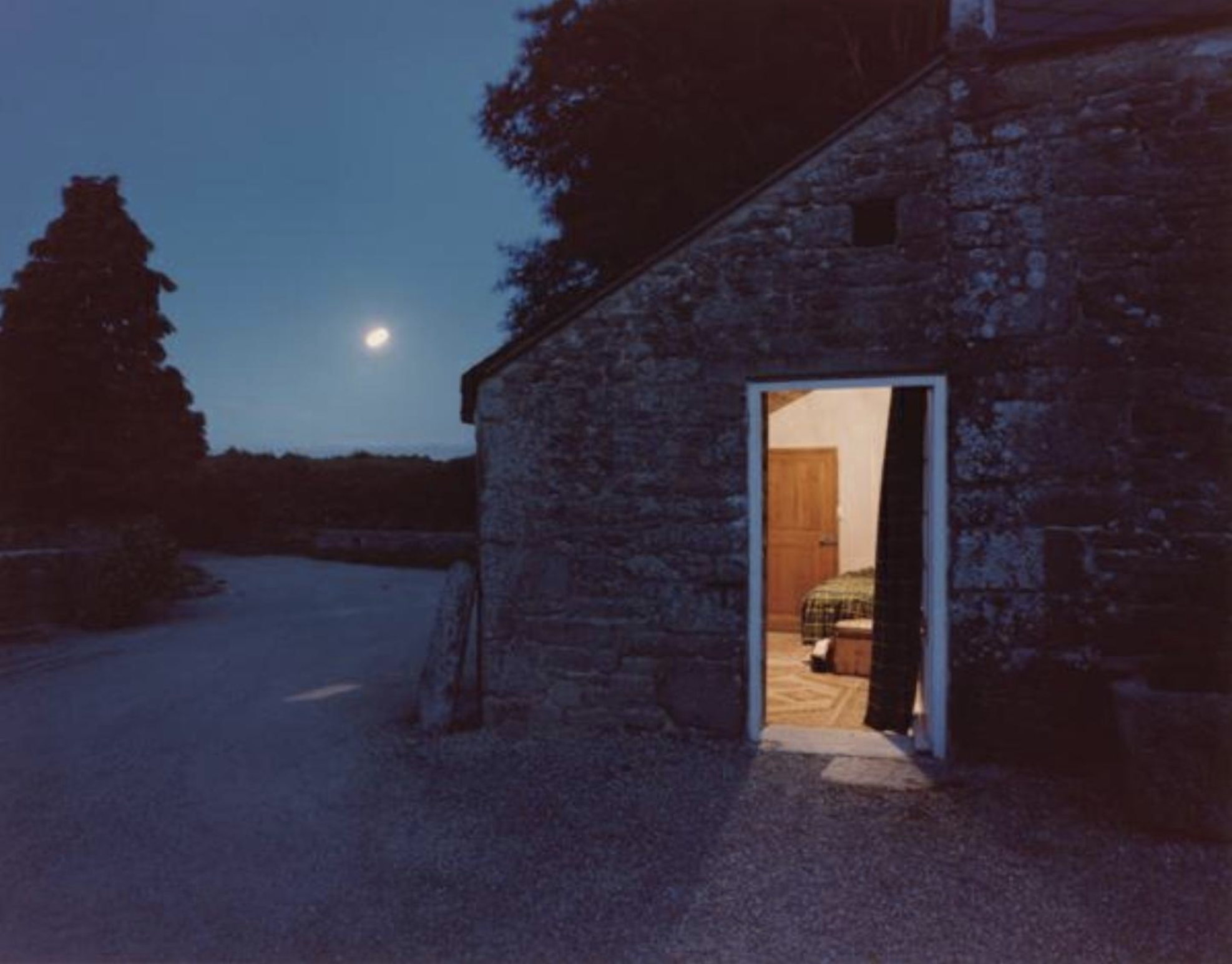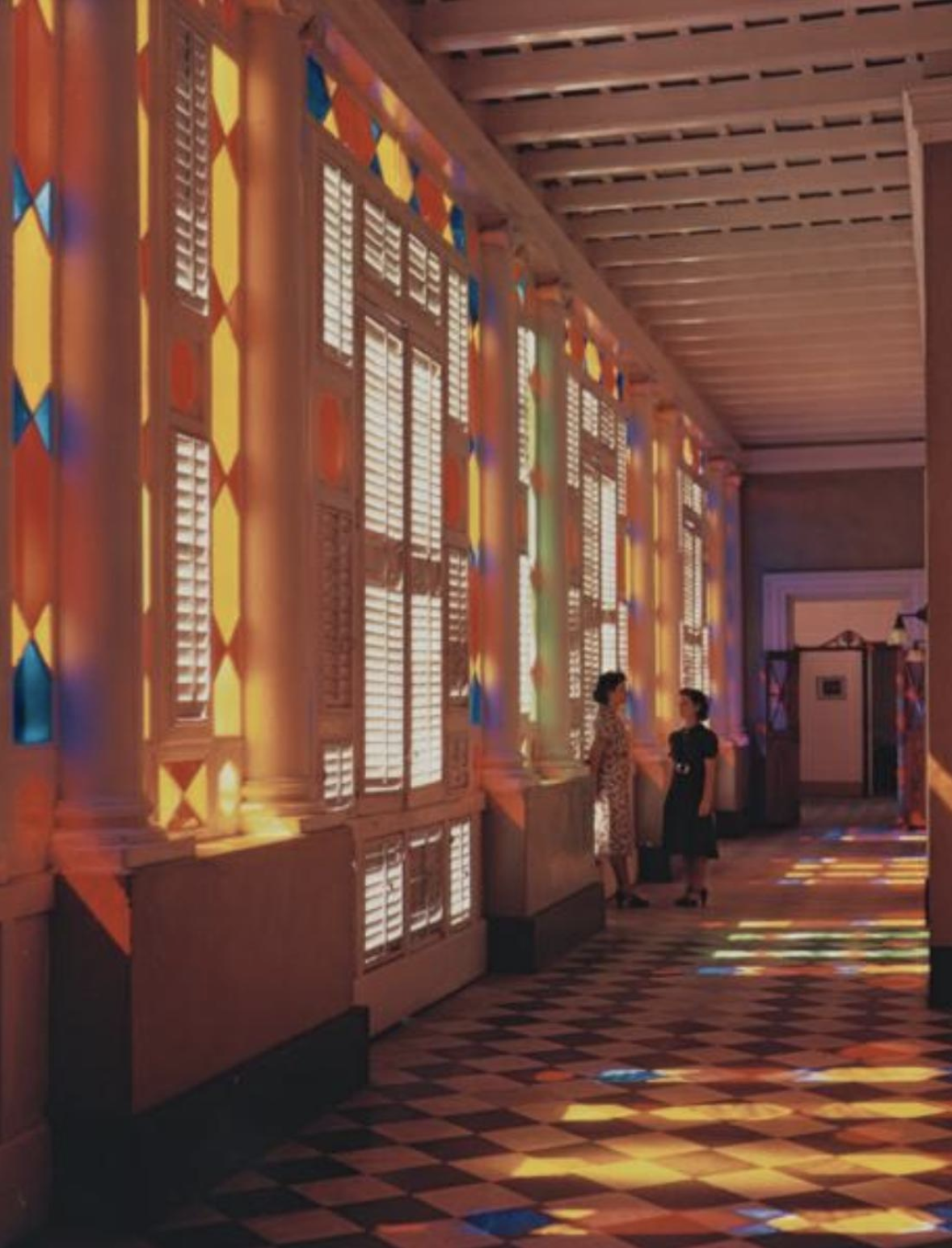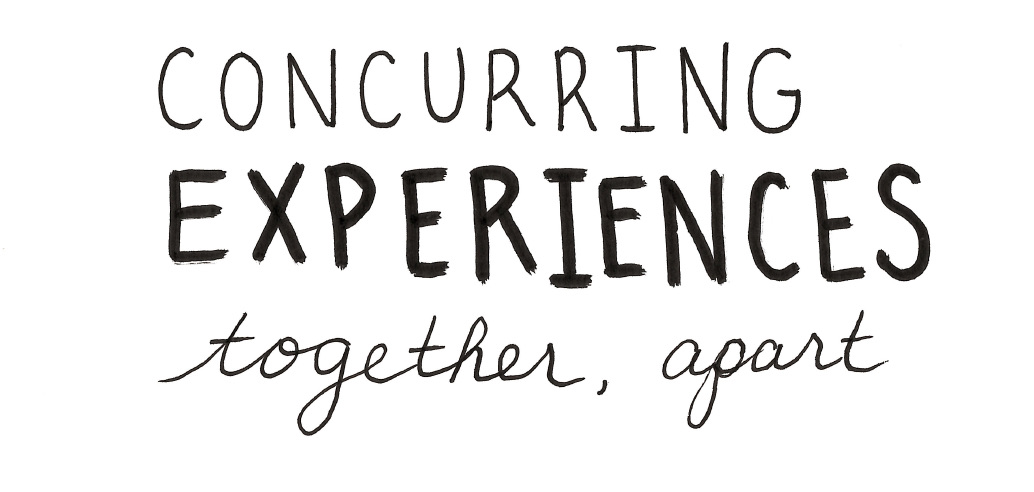Possibility Resilience
Richard Rodriguez
Dye coupler (chromogenic) print mounted on board
10 x 14 in.
Gift from the Trustees of the Corcoran Gallery of Art (Museum Purchase with the aid of finds from the National Endowment for the Arts, Washington, D.C., a Federal agency, and the Polaroid Corporation)
© Richard Rodriguez
Text by Megan Storkan
Chris's Room, 1979
Image Description:
Situated in a remote location, a small home resides, surrounded by trees. It appears to be a cold winter’s night, the warmth of the light from the home inviting the viewer in. Not much is visible within the home, except a bed and another door, leading to the rest of the home. Compositionally, the light of the moon balances out the light of what one can assume to be Chris’s Room. The subject matter of the photograph, the room, is suspended in a void-like setting, asking the viewer to navigate through the composition as a whole; confused and unaware of where one truly is.
Rodriguez’s composition offers a different take on solitude, one that is inviting and warm. However, this photograph also gives the viewer a look into two contrasting worlds; dark and light, within and without. The viewer is asked to decide between these two contrasting ideas, a decision that ultimately will impact how one views the composition as a whole.
Artist Bio:
Richard Rodriguez is a Washington D.C. based photographer, earning his Master of Fine Arts degree from the George Washington University. This photograph, taken during his time at George Washington, was acquired by the Corcoran Museum in 1980 in an effort to diversify its collection. When the work was first displayed as a part of the museum’s 1981 exhibition, Washington Post critic Paul Richard noted Rodriguez’s attention to color, calling it the image’s strongest characteristic.
Edwin L. Wisherd
Dye imbibition print
41.75 H x 27.62 W cm (16 7/16 H x 10 7/8 W in)
Gift from the Trustees of the Corcoran Gallery of Art (Gift of Eastman Kodak Company)
© National Geographic Society
Text by Saskia Giramma
La Fortaleza, Where Puerto Rico's Governors Have Maintained their Homes and Offices for Four Centuries, San Juan, Puerto Rico, c. 1934
Image Description:
This image depicts deeply saturated stained glass windows leaking light into a building in Puerto Rico. Two women stand in the background.
This photograph depicts La Fortaleza, the Fortress, in San Juan, Puerto Rico. Originally built as a defensive structure for the city of San Juan, the building has now been designated as a United States National Historic Landmark and declared to be a World Heritage Site by the United Nations Educational, Scientific and Cultural Organization.
Artist Bio:
Beginning as an assistant to the photographic staff at age 19, Edwin Wisherd was one of National Geographic’s earliest photographers. He would become an award-winning photographer who pioneered the use of color photography in the 1920s responsible for National Geographic’s first natural color plates exposed in the field.
As individuals, we see that our strength comes from community. Each of us has the opportunity to make an impact, and together we can create sustained change. In a time where many could use an extra hand, consider what help you can offer, what possibilities you can share.
While this time has been difficult universally, many groups have been disproportionately impacted. The Stop Asian American Pacific Islander Hate reporting center was created in response to the alarming escalation in xenophobia and bigotry resulting from the COVID-19 pandemic.
To learn more about how to become an ally please visit: Stop AAPI Hate
You can spread awareness of those within our own community, the Asian Pasifika Arts Collective, who are providing a platform and opportunity for Asian artists locally.
You can learn more at: The Asian Pasifika Arts Collective
CONTINUE LEARNING
CONTINUE CENTERING COMMUNITY
SUSTAIN YOUR COMMUNITY ENGAGEMENT
Click to Continue to the Next Group of Photographs:
Or Return to Full Gallery:




